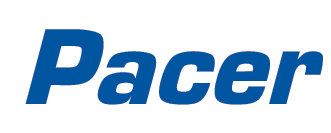Maritime Lighting Explained
Posted by Eric Jameson on 17th Nov 2025
Navigating any vessel becomes more difficult at night, and this holds true for boats. Any motorized boat is required to have navigation lighting for use between sunset and sunrise. The lights indicate various sides of the boat and, once mastered, make passing other vessels safely at night a much easier task. In truth, the lighting system is one of the most important safety systems in place on your boat. Picture this: you’re out at night on your boat under a new moon, and you can hear another boat approaching, but you cannot see it. That’s a terrifying proposition. Lights make it easier for other boats to see you and for you to see them as well.
"In truth, the lighting system is one of the most important safety systems in place on your boat."
Since the 1840s, the US has required all boats to have night lighting as part of their navigation system. This concept soon spread to the rest of the world. Now, most of the world uses the UK system of red, green, and white. These lights set up an easy-to-understand pattern that any boater can use to determine not only the approximate distance of another vessel but also the direction they are facing as well. You can even tell if a boat is underway or at anchor based on the pattern of lights the boat operator is currently using.

The lighting system is simple, as the three colors indicate a specific side of the vessel. Imagine you are standing on your boat facing the bow. To your left is the port side and a red light. To your right is the starboard side and a green light. Directly behind you at the stern is a white light. So when you look out onto the water at night and see a green light on the left and a red light on the right of another vessel, you know they are approaching your vessel. Take a look at the image here to see a simplified version.


The mast light is white and is found on, you guessed it, the mast. If your vessel has two masts, well then you must have two mast lights, which makes sense. It allows other vessels to judge your length from a safe distance. Another important fact is the actual areas the lights themselves cover. Marine lighting is designed to cover specific areas for simplicity. The stern light covers 135 degrees behind the vessel. In contrast, both the portside lights (red) and the starboard side lights (green) cover 112.5 degrees.
"It allows other vessels to judge your length from a safe distance. Another important fact is the actual areas the lights themselves cover. Marine lighting is designed to cover specific areas for simplicity."
The thing is, knowing these colors isn’t enough. You need to be aware of how larger vessels will be using these lights. Oftentimes they use a combination of two or more lights to indicate a message to other vessels. Below is a quick summary of some of the most commonly used marine lighting combinations.
Marine Navigation Lighting Guide
*Important Note: the information should not be taken as the full legal standard. For operational compliance, you’ll still need to refer to the exact applicable regulations (e.g., COLREGs, US Inland Rules, local statutes) in relation to : 1. Visibility/range requirements, 2. Mounting heights and placement, 3. Specific combinations for different vessel types (length, propulsion, towing, fishing), 4. Variations in inland vs international waters.



- Red light – Port side indicator light
- Two Red lights – Vessel is not under command, the operator may not be able to control. Must keep out of way.
- Three Red lights vertical – A very deep vessel is in shallow a area and cannot get out of your way.
- Green light – Starboard side indicator light
- Two Green lights – Vessel is restricted in ability to maneuver. Tells you which side is clear to pass
- White light – Many uses; stern light, small vessel, small boat, anchor light
- Two White lights – The vessel is towing something less than 200 meters
- Three White lights – The vessel is towing something larger than 200 meters
- Red-White-Red – Restricted in the ability to maneuver due to work or tasks
- Yellow – fast flash – Used by hovercraft, indicates they have limited control to direction
- Yellow – slow flash – Used by submarines
- Green over White – Trawling vessel
- Red over White – Fishing other than trawling
- White over Red – Pilot boat – boat carrying pilot to guide to port
- Red over Green – Additional lights for sailing vessels.


